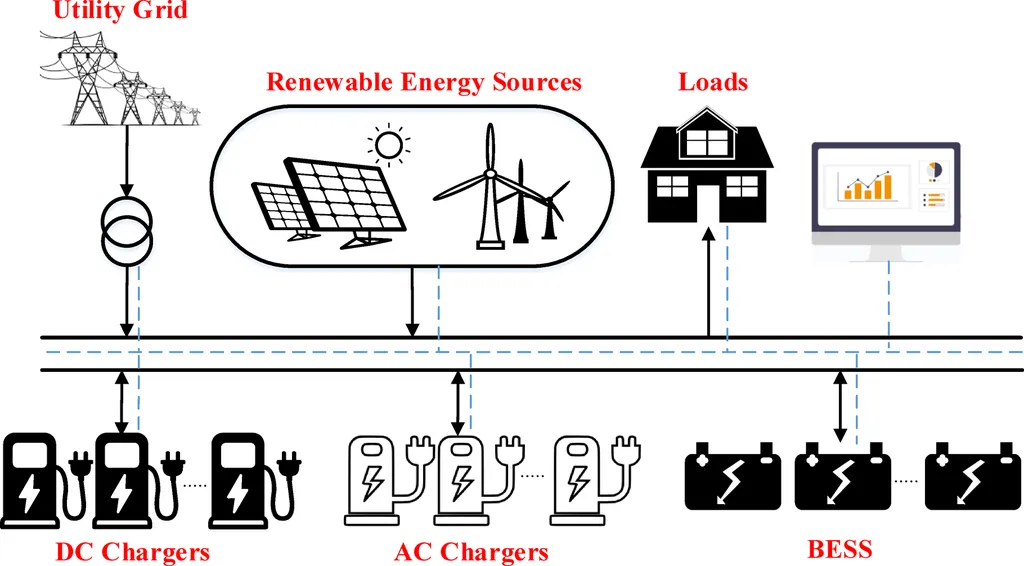In a significant stride towards stabilizing power grids dominated by renewable energy sources, researchers have developed a novel control scheme that leverages the flexibility of electric vehicles (EVs) to enhance frequency stability. Published in the journal *e-Prime: Advances in Electrical Engineering, Electronics and Energy*, the study introduces a double-stage control scheme that combines a tilt fractional-order integral derivative (TFOID) controller with a proportional-integral (PI) controller. This innovative approach, led by Morsy Nour from the Department of Electrical Engineering at Aswan University, Egypt, aims to address the challenges posed by the increasing integration of intermittent renewable energy sources (RESs).
The study focuses on the Egyptian power system (EPS) under the 2035 scenario, which anticipates a substantial increase in RESs. “The non-dispatchable nature of renewable energy sources creates significant challenges for power system frequency control,” explains Nour. “Our proposed control scheme not only improves frequency stability but also simplifies the tuning process, making it more practical for real-world applications.”
One of the key aspects of this research is the use of the Artificial Hummingbird Algorithm (AHA) to optimize the parameters of the TFOID-PI controller. This state-of-the-art heuristic algorithm ensures that the controller performs optimally under varying conditions. The study also explores the role of EVs in frequency control, considering scenarios where EVs operate in grid-to-vehicle (G2V) mode as controllable loads and in both G2V and vehicle-to-grid (V2G) modes.
The findings demonstrate the superiority of the proposed controller over existing ones, even under large variations in RESs and loads, and system uncertainties. “The study proves that EVs can effectively contribute to frequency control, whether they are operating solely in charging mode or in both charging and discharging modes,” Nour adds. “This not only enhances grid stability but also satisfies the needs of EV owners through smart charging strategies.”
The commercial implications of this research are substantial. As the energy sector continues to shift towards renewable sources, the need for advanced control schemes that can handle the variability and uncertainty of RESs becomes increasingly critical. The proposed double-stage control scheme offers a practical and effective solution that can be integrated into existing power systems, enhancing their stability and reliability.
Moreover, the study highlights the potential of EVs as flexible resources that can support grid stability. This could open up new opportunities for EV owners to participate in grid services, creating a mutually beneficial relationship between EV owners and grid operators. “The integration of EVs into frequency control strategies represents a significant step towards a more sustainable and resilient energy future,” Nour concludes.
As the energy sector continues to evolve, research like this paves the way for innovative solutions that can address the challenges of integrating renewable energy sources and enhancing grid stability. The proposed control scheme and the exploration of EV participation in frequency control offer valuable insights that could shape the future of power system management.

